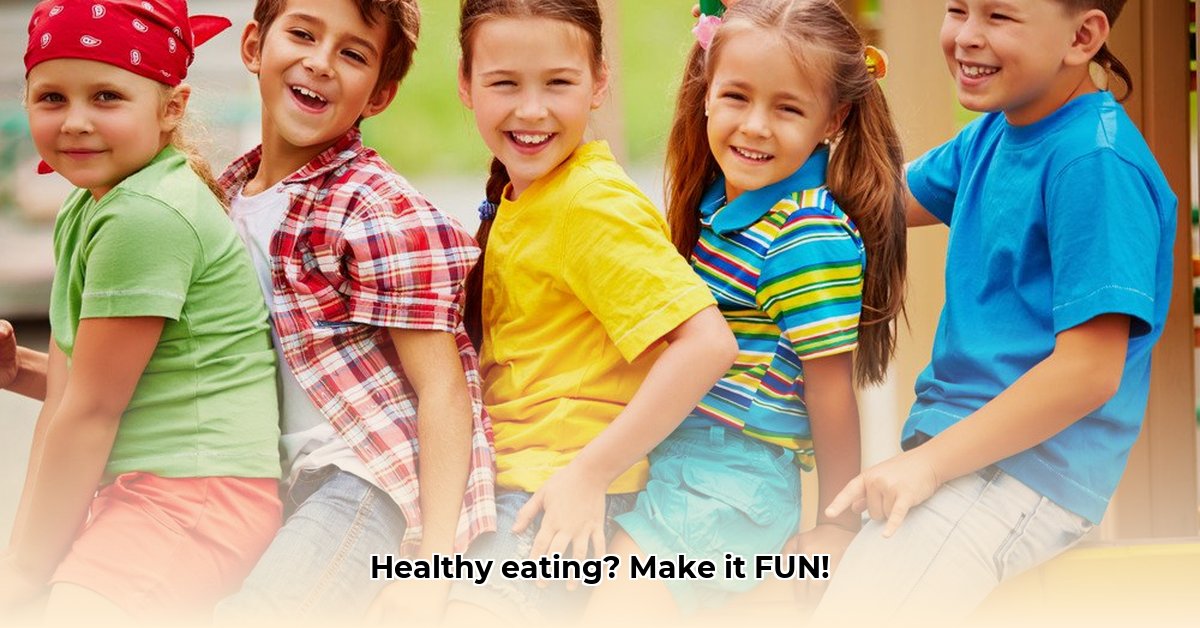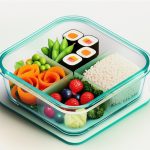Tired of mealtime battles? Does the sight of green beans spark a miniature revolt? This guide will show you how to use the power of children’s books to transform healthy eating from a chore into a delightful adventure. Discover simple, effective strategies to turn story time into a potent tool for cultivating healthy habits that last a lifetime. Get ready to transform picky eaters into curious, adventurous foodies – one captivating story at a time! For more fun ideas, check out these healthy eating cartoons.
Children’s Healthy Eating Stories: Making Mealtimes Magical and Promoting Nutritional Awareness
Want to raise kids who are genuinely excited about fruits, veggies, and all things nutritious? Forget the battles of will! Children’s healthy eating stories offer a fun, engaging way to instill a lifelong love of healthy food. They’re more than just bedtime tales; they’re bite-sized lessons disguised as exciting adventures. Imagine them as tiny seeds of healthy habits planted in your child’s imagination – seeds that blossom into a joyful, intuitive relationship with nutritious food. The key is to promote nutritional awareness through narratives that captivate and inspire.
Why Stories Work Their Magic on Kids’ Perceptions of Food
Stories possess a unique power: they create positive associations. When children connect memorable characters and thrilling plots with healthy foods, those foods transition from being a dreaded obligation to a desirable treat! It’s like sprinkling a little bit of magic on steamed spinach – suddenly, it becomes intriguing, even appealing! This approach proves far more effective than simply lecturing a child with the directive, “Eat your vegetables!” It’s about making healthy choices feel exciting, empowering, and inherently rewarding, fundamentally shaping their perceptions of food and fostering a sense of agency.
Choosing the Perfect Story: Tailoring to Your Child’s Age and Interests
The ideal story hinges entirely on your child’s age, developmental stage, and individual interests. A toddler will respond most effectively to simple, repetitive narratives featuring large, vibrant illustrations. Think bold primary colors, playful sound effects, and tactile elements! You can readily find a plethora of board books specifically designed for this age group. Preschoolers, in contrast, might crave a more interactive story experience, ideally one with relatable, engaging characters that mirror their own lives and experiences. Early elementary school children (6-8) are primed for more intricate plots, sophisticated themes, and even a touch of problem-solving skillfully woven into the narrative. Do they have a passion for adventure stories? Seek out tales where the hero triumphs over adversity by strategically choosing nutritious foods that fuel their journey! Is your child an ardent animal lover? A vast array of stories feature food-loving creatures – some even boast talking fruits and vegetables with distinct personalities! So, before selecting a story, ask yourself, “Does this narrative feature talking fruits and/or vegetables, and if so, are they presented in a compelling, engaging manner?”
Making Story Time Interactive: Beyond Just Reading Aloud and Building Positive Associations
Simply reading a healthy eating story aloud isn’t enough; it’s about crafting a memorable, engaging experience that resonates with your child on multiple levels. Here’s how to maximize the impact of story time:
- Become a character: Infuse the reading with energy and enthusiasm by acting out parts of the story using silly voices, dramatic gestures, and expressive facial expressions. Bring the characters to life!
- Ask questions: Transform story time into a dynamic dialogue. Don’t just passively read; actively engage your child by posing thought-provoking questions such as, “What do you predict will happen next?” or “Why do you think the character made that particular food choice?”
- Point out the yummy stuff: Skillfully draw your child’s attention to the vibrant colors, appealing textures, and enticing details of the fruits and vegetables depicted in the illustrations. Offer enthusiastic comments like, “Just look how bright and shiny that apple is!”
- Let them participate: Empower your child to take an active role in the storytelling process. Perhaps they can assist with turning the pages, create their own custom sound effects for different characters, or even improvise alternative endings to the story.
What types of hands-on activities can forge strong positive associations between healthy eating, imaginative storytelling, and playful playtime?
Story Time Strategies: A Breakdown by Age Group and Fostering Family Engagement
Here’s a practical, easy-to-use guide designed to match specific story types with your child’s developmental stage, effectively fostering family engagement and creating shared positive experiences:
| Age Group | Ideal Story Type | Super Engaging Activities | Real-World Connections |
|---|---|---|---|
| Toddlers (1-3 years) | Simple, repetitive narratives, picture-heavy emphasis | Point to pictures, enthusiastically repeat key words and phrases, sing silly songs about food | Serve the foods featured in the book as nutritious snacks. Transform it into a fun, playful, interactive experience! |
| Preschool (3-5 years) | Interactive stories, character-driven plots | Act out scenes using puppets or plush toys, create food-themed crafts (such as fruit-print art!) | Prepare simple meals or snacks together. Involve them in age-appropriate tasks, such as washing vegetables. |
| Early Elementary (6-8) | Problem-solving narratives, adventure stories | Discuss characters’ choices, analyze the story’s underlying lesson about healthy habits. | Cultivate a small herb garden or plant vegetables together. Involve your child in planning weekly meals. |
Extending the Fun: Beyond the Book’s Pages and Exploring the Benefits of Cooking Together
Remember, the story is just the launching pad! View it as a springboard for even more enjoyable, enriching activities that extend the learning and foster a deeper connection with healthy eating. Here are some effective strategies, as well as ways of exploring the numerous benefits of cooking together as a family:
- Cook together: Select a recipe inspired by the story and prepare it together as a family. Involve your child in age-appropriate tasks such as washing vegetables, measuring ingredients, or stirring the mixture.
- Create healthy snacks: Transform snack time into a creative, collaborative project! Use cookie cutters to create whimsical shapes out of fruits and vegetables, or arrange them into colorful, appealing patterns on a plate.
- Visit a farmer’s market: Transform grocery shopping into an exciting adventure! Let your child select some of the fruits and vegetables featured in the story, encouraging them to explore new flavors and textures.
- Read related books: Expand on the themes and concepts introduced in the initial story by seeking out other books that feature the same healthy foods, relatable characters, or engaging storylines.
The Long-Term Payoff: Building Healthy Habits for Life and Cultivating a Positive Relationship with Food
By actively engaging your child with children’s healthy eating stories, you’re achieving far more than simply sharing a book. You’re actively nurturing healthy habits, constructing positive associations with nutritious foods, and laying a strong foundation for a lifetime of healthy choices. The positive influence you’re having is profound and far-reaching! It’s about fostering a positive, joyful, and sustainable relationship with food – one that will serve your child well for many years to come, as well as cultivating a positive relationship with food from an early age. Remember, this is a marathon, not a sprint. Maintain a fun, playful, and patient approach, and watch your child flourish into a healthy, happy, and confident eater.
Key Benefits Summary:
- Employ multi-component interventions, strategically combining various approaches, for maximum impact. Think of it like baking a cake – you need all the essential ingredients in the right proportions for it to be truly delicious!
- Prioritize creating a supportive environment that promotes healthy choices. This is akin to setting the stage for a successful play – the right setting makes all the difference in creating a positive, engaging experience.
- Implement environmental changes (such as healthier school lunches) to generate stronger, more sustainable results. This is like constructing a solid foundation – it provides the essential support for everything that follows.
Measuring the Effectiveness of Children’s Books in Promoting Healthy Eating and Understanding Dietary Choices
So, you’ve meticulously crafted a captivating children’s book focused on healthy eating. How do you determine if it’s truly making a difference in children’s lives? Measuring the effectiveness of children’s books in promoting healthy eating involves more than just tracking sales figures or counting positive reviews. It’s about gaining deep insights into whether your book is genuinely influencing children’s thoughts, attitudes, and behaviors, as well as understanding and appreciating dietary choices. We need to look beyond the superficial aspects of the book, such as the quality of the illustrations and the catchiness of the rhymes.
Measuring Success: A Multi-Faceted Approach and Assessing Attitude
Measuring the overall impact requires a comprehensive, multi-pronged strategy, as well as a careful assessment of attitudes:
- Pre- and Post-Reading Assessments: Conduct assessments of children’s understanding of healthy foods before and after they read your book, utilizing age-appropriate quizzes, surveys, or interactive games. Use age-appropriate questions! Has their knowledge base expanded as a result of reading the book?
- Attitude Surveys: Gauge children’s overall feelings and attitudes towards healthy eating by conducting surveys that incorporate visual aids, such as happy/sad faces, or open-ended questions that encourage them to express their opinions and preferences. Do they demonstrate more enthusiasm about trying new foods or incorporating healthy options into their meals? This data is inherently subjective, but it can provide valuable insights into their emotional responses.
3.
- How Glass Bento Box Containers Make Meal Prep Easier - December 18, 2025
- Why Glass Boxes for Lunch Are Trending for Meal Prep - December 17, 2025
- Bento Box Glass Offers Practical, Eco-Friendly Meal Storage - December 16, 2025










